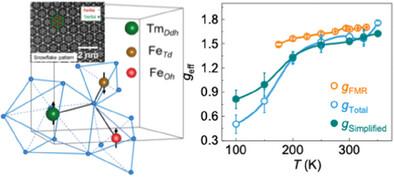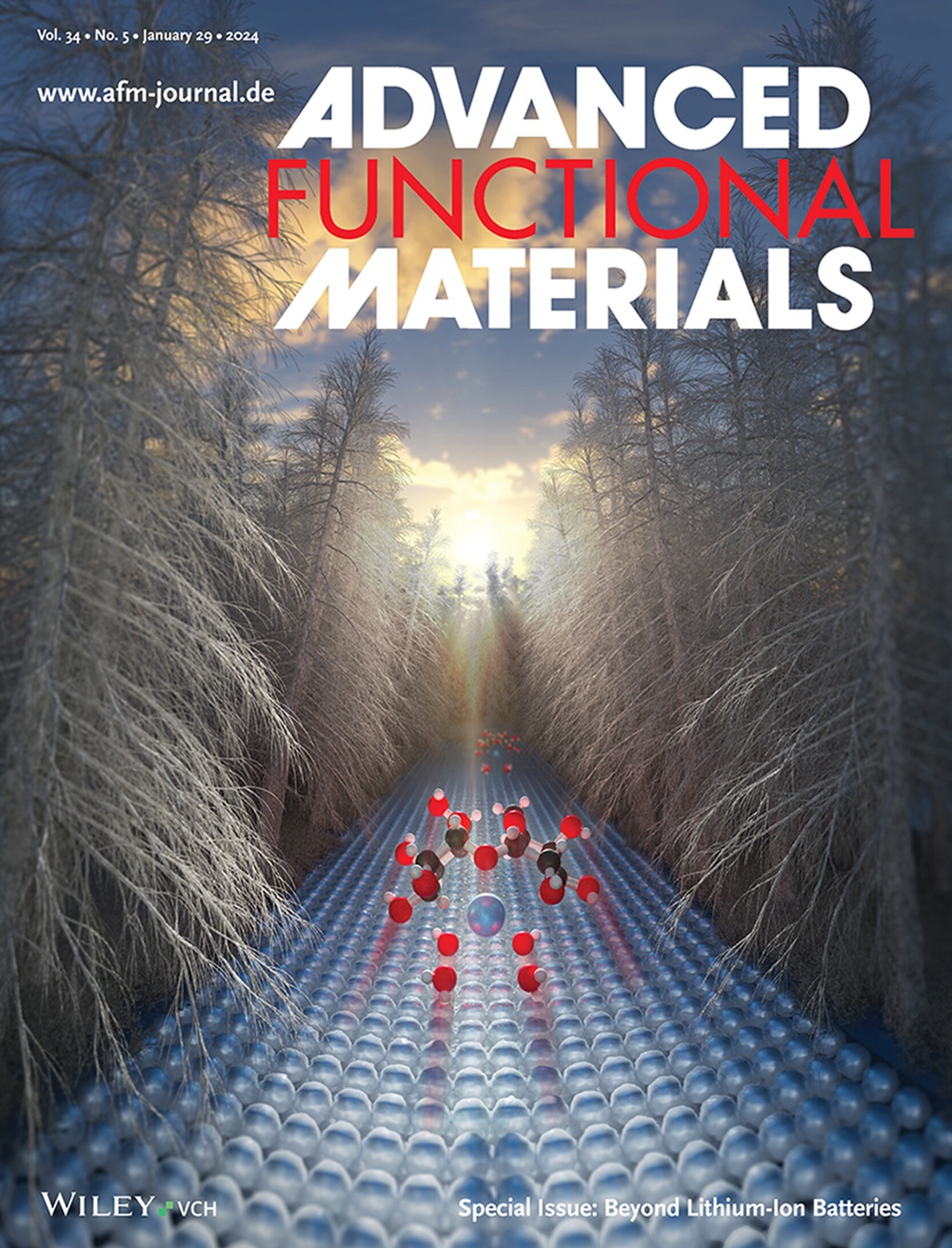垂直磁化磁绝缘体中的室温强轨道力矩
IF 18.5
1区 材料科学
Q1 CHEMISTRY, MULTIDISCIPLINARY
引用次数: 0
摘要
磁性系统中轨道磁矩和自旋磁矩之间的平衡是许多有趣现象的核心。在这里,实验证明在铁磁性绝缘体铥铁榴石(Tm3Fe5O12)中存在一个巨大的轨道磁矩,它与其对应的自旋磁矩相互竞争。利用特定元素的 X 射线磁圆二色性(XMCD),可以确定轨道力矩的主要贡献来自 Tm 的 4f 轨道。除了巨大的 Tm 轨道力矩之外,有趣的是,研究结果还揭示了 O K 边缘较小但明显的非零 XMCD 信号,这表明与近邻铁原子之间存在额外的自旋轨道耦合和交换相互作用。未淬火轨道力矩是导致 g 因子显著降低的主要原因,过渡金属中的 g 因子通常为 2,这是用铁磁共振光谱独立测定的。研究结果表明,在 Tm3Fe5O12 薄膜中,g 因子从 300 K 时的 1.7 非线性降低到 200 K 时的 1.56。这些结果为了解 f 轨道在长程磁序中的作用提供了重要见解,并激发了对轨道电子学的进一步探索。本文章由计算机程序翻译,如有差异,请以英文原文为准。

Room Temperature Strong Orbital Moments in Perpendicularly Magnetized Magnetic Insulator
The balance between the orbital and spin magnetic moments in a magnetic system is the heart of many intriguing phenomena. Here, experimental evidence of a large orbital moment is shown, which competes with its spin counterpart in a ferrimagnetic insulator thulium iron garnet, Tm3Fe5O12. Leveraging element-specific X-ray magnetic circular dichroism (XMCD), it is established that the dominant contribution to the orbital moment originates from 4f orbitals of Tm. Besides the large Tm orbital moment, intriguingly, the results also reveal a smaller but evident non-zero XMCD signal in the O K edge, suggesting additional spin-orbit coupling and exchange interactions with the nearest neighbor Fe atoms. The unquenched orbital moment is primarily responsible for a significant reduction in g-factor, typically 2 in transition metals, as determined independently using ferromagnetic resonance spectroscopy. The findings reveal a non-linear reduction in the g-factor from 1.7 at 300 K to 1.56 at 200 K in Tm3Fe5O12 thin films. These results provide critical insights into the role of the f orbitals in long-range magnetic order and stimulate further exploration in orbitronics.
求助全文
通过发布文献求助,成功后即可免费获取论文全文。
去求助
来源期刊

Advanced Functional Materials
工程技术-材料科学:综合
CiteScore
29.50
自引率
4.20%
发文量
2086
审稿时长
2.1 months
期刊介绍:
Firmly established as a top-tier materials science journal, Advanced Functional Materials reports breakthrough research in all aspects of materials science, including nanotechnology, chemistry, physics, and biology every week.
Advanced Functional Materials is known for its rapid and fair peer review, quality content, and high impact, making it the first choice of the international materials science community.
 求助内容:
求助内容: 应助结果提醒方式:
应助结果提醒方式:


